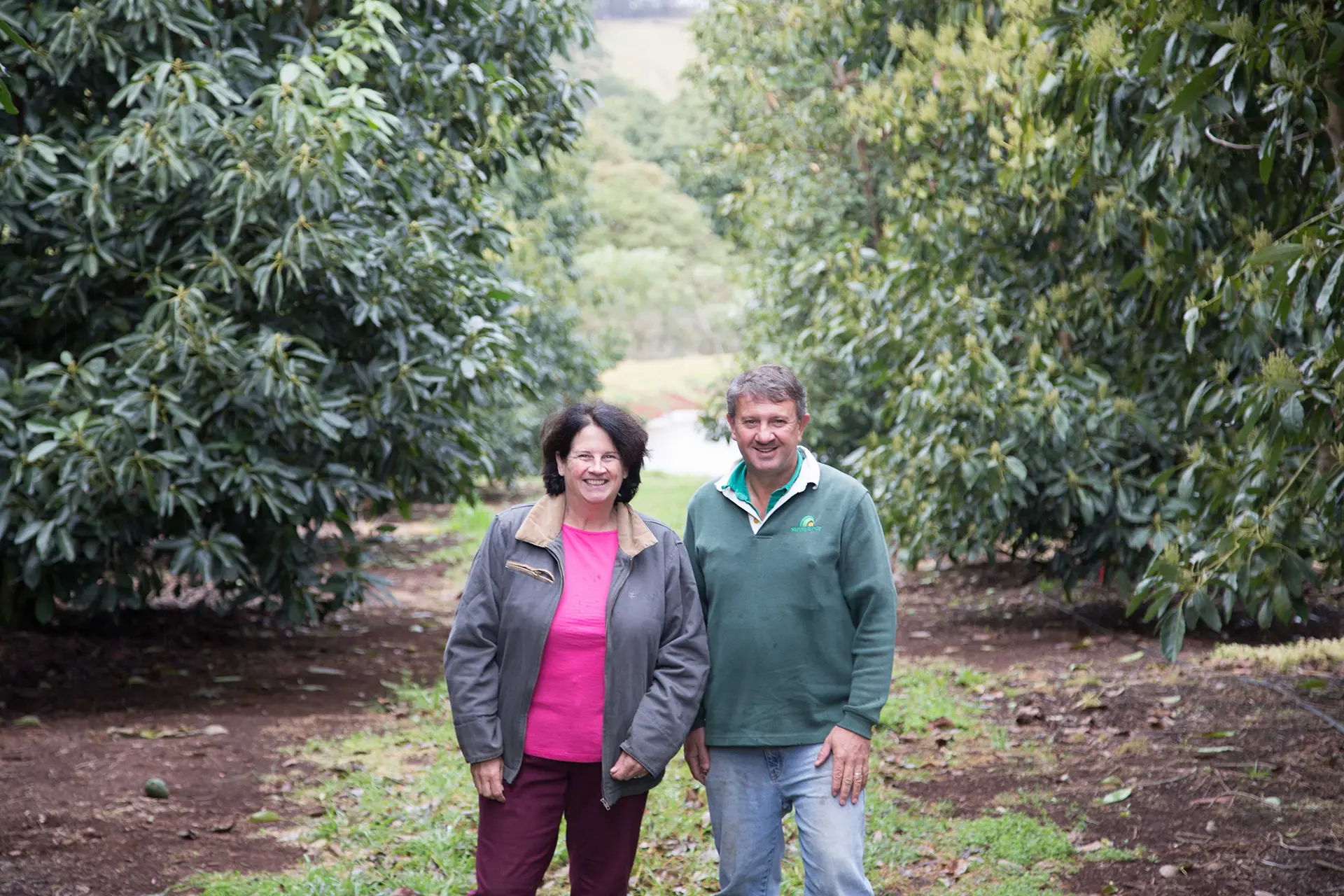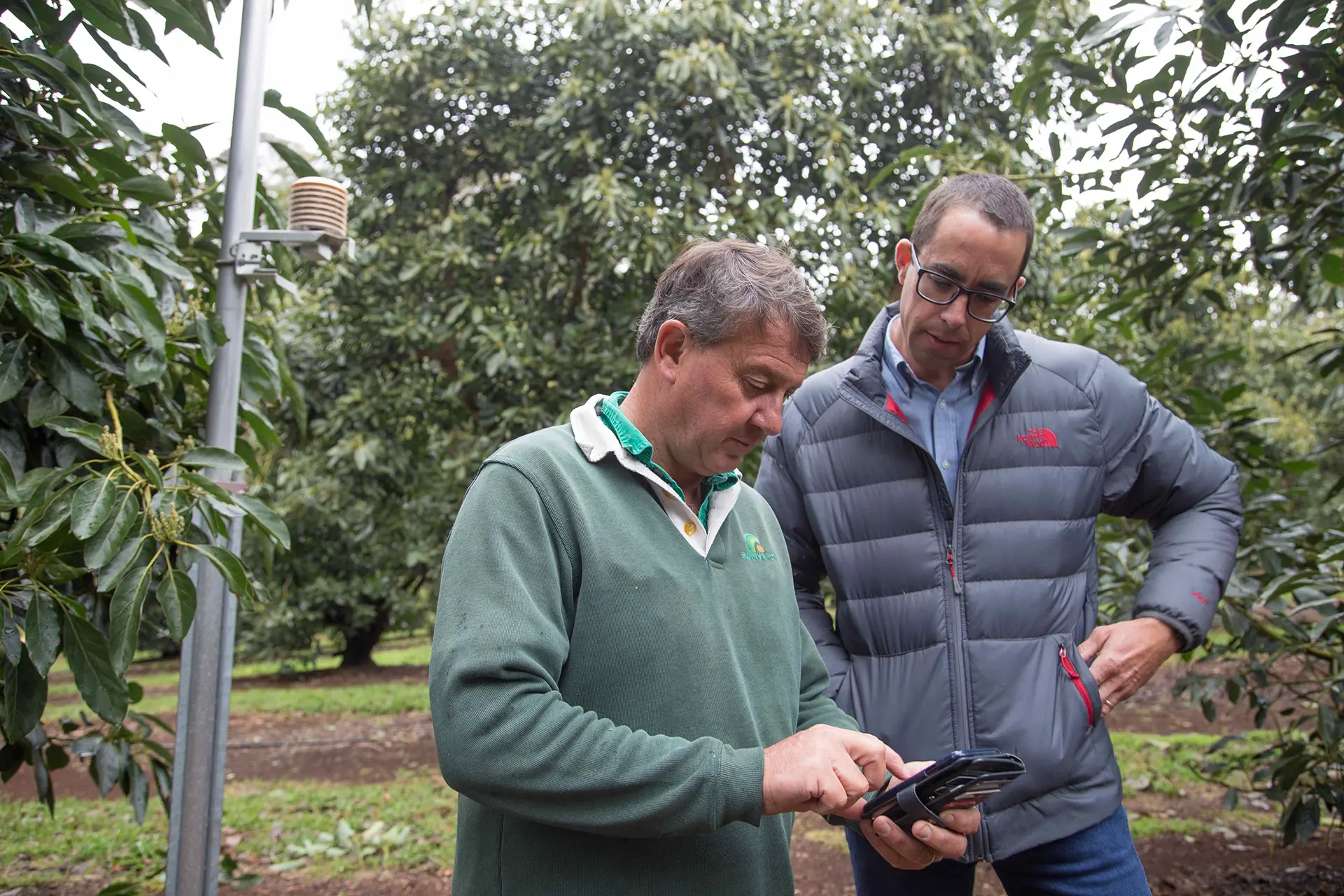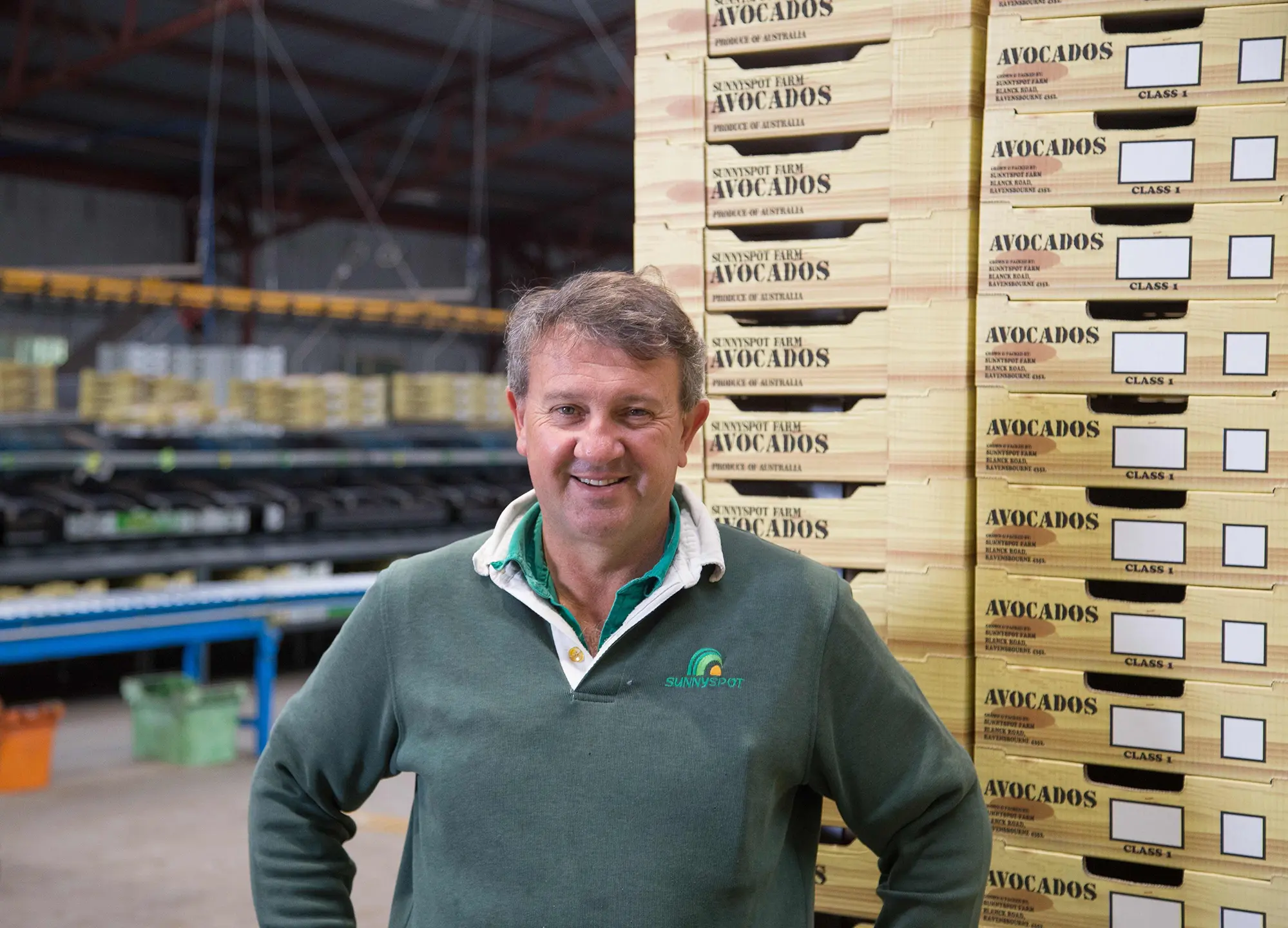With 20-thousand avocado trees at Ravensbourne and Hampton, north of Toowoomba, and at Bundaberg, Daryl Boardman is quick to identify his biggest farming challenge as water management.
Daryl, who is owner, director of Sunny Spot Farms with his wife Sally, grows and packs avocados for themselves and other farms, and also runs a transport business.
“We've only got underground water, and in a year like 2019 when we've had a major drought and have been trying to grow a crop with limited water, you can't waste any and that's where understanding what's going on in your soils is crucial,” he explains.
“If you don't get water management right, it will reduce production through not setting fruit properly at flowering, and then that first 90 days after flowering is the most important time to not let the tree stress.
“If you want to get fruit size, which turns into yield, or tonnes per hectare, you need to make sure watering is done well, not letting it go past the crop's active root zone.”
Traditionally the Boardmans monitored soil moisture by using a shovel to dig under the trees, with Daryl acknowledging they didn't really know what was going below the ground, describing it as 'flying blind'.
However, that all changed when they were introduced to GDot soil moisture monitoring technology from Green Brain in 2014.
“It's a bit scary when you start using proper soil monitoring technology, because then you realise how much you haven't been watering enough,” Daryl recalls.

“As a basic soil moisture monitoring device, the GDot worked well and was a good starting point, but you've got to go out and actually physically have a look at them to know where you're at.”
The Boardmans quickly made a transition to the next level of Green Brain technology within a year, upgrading to a Plexus system with Green Brain web app technology in 2015. The Plexus system consists of two different types of monitoring technologies; gypsum blocks and capacitance probes.
“The Plexus is recording 24 hours a day, we can look at it on our phones, we can look at it from overseas, I can look at it wherever I am,” Daryl says.
“It gives us deeper readings, so we can now see soil conditions down to 80 centimetres, whereas with a GDot, we were basically restricted to just one level.
“If we are only wanting to water the top 30 to 40 centimetres, we can accurately run the water so we don't go below that, meaning in a dry year like 2019 we're not wasting water, which has been crucial.
“Our farm managers and staff can look at the data at home, so the next day they can come in and readjust watering schedules and work out what blocks need more or less.”
The Green Brain web app technology plays a crucial role in the whole system, being the platform the data is sent to from the Plexus system. Green Brain translates key data, allowing users to make informed irrigation decisions.
“By knowing what the blocks need, we can give them the right amount of water to get the best production we possibly can out of them,” Daryl says.

“The monitoring tools are not cheap initially, but I think over time they're a very cheap investment as they help us understand how to irrigate efficiently - without it you've got no idea what's happening, particularly 30-40 centimetres under the ground.
“Plexus has a lot of add-on features, but we've just gone with temperature, humidity and rainfall, which we think is the best utilisation of the unit for us.
“I don't think you can grow avocados without them to be honest. whether it's Plexus or any other similar technology, knowing what's happening in real time is important.”
Business Development Manager for MEA in Queensland Justin Clarke says the process the Boardmans followed in quickly upgrading from a simpler GDot system to the Plexus and Green Brain combination is a common one.
“It's providing them a clear understanding of where and when the crop is using water, the effectiveness or ineffectiveness of a rainfall or irrigation event, and being able to really refine the irrigation schedule to make the most of the water they have available,” he explains.
“There's still room for growers to fully explore the potential of these soil moisture monitoring systems, but overall there's been good uptake in the avocado industry.”
Being involved in the industry more broadly through Avocados Australia, Daryl has a good handle on what farmers are doing around Australia, and he agrees smaller farmers in particular are yet to capitalise on soil moisture monitoring technology.
“The larger farmers have probably got soil moisture management covered, but there's a lot of smaller farmers who would have no idea and they are not doing much at all,” he says.
